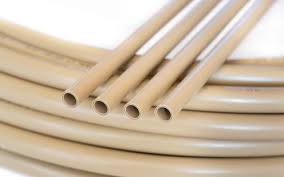Dec . 11, 2024 09:22 Back to list
PPR Pipes for Efficient Water Supply Solutions and Applications
Understanding PPR Pipe for Water Supply A Comprehensive Guide
PPR pipes, or Polypropylene Random Copolymer pipes, have gained remarkable significance in plumbing, particularly for water supply systems. This high-performance piping solution is favored for its durability, efficiency, and versatility. In this article, we will delve into the characteristics, advantages, applications, and installation processes of PPR pipes, emphasizing their role in modern water supply systems.
Characteristics of PPR Pipes
PPR pipes are made from a type of plastic known as polypropylene. This material is engineered to endure high temperatures and pressures, making PPR pipes suitable for both cold and hot water applications. The random copolymer structure of polypropylene contributes to its superior resistance to chemicals, impact, and fouling, which is essential in maintaining the quality of drinking water.
Moreover, PPR pipes are available in various diameters and pressure ratings, allowing them to be tailored to particular requirements in diverse settings—from residential homes to large commercial buildings. Their smooth inner walls promote excellent flow rates and minimize the risk of deposits and blockages over time.
Advantages of PPR Pipes
1. Corrosion Resistance Unlike traditional metal pipes, PPR pipes do not rust or corrode. This property ensures a longer lifespan and reduces the need for frequent replacements, thus proving cost-effective in the long run.
2. Eco-Friendly PPR is recyclable, making it a sustainable option for water supply systems. As environmental concerns continue to rise, the use of eco-friendly materials like PPR is increasingly important.
3. Thermal Insulation PPR pipes have low thermal conductivity, which helps maintain water temperature and reduces energy consumption when used in hot water systems.
4. Lightweight and Easy to Handle PPR pipes are considerably lighter than metal alternatives, which simplifies transportation and installation. This characteristic also reduces labor costs and time.
5. Low Noise The material properties of PPR pipes result in quieter operation, minimizing noise pollution in buildings, which is particularly beneficial for residential environments.
Applications of PPR Pipes
ppr pipe for water supply product

PPR pipes are versatile and can be used in various applications, including
- Residential Plumbing Ideal for hot and cold water systems, their corrosion resistance and durability make them popular in homes. - Commercial Buildings PPR pipes are frequently used in larger water supply systems in buildings, ensuring efficient and reliable water distribution. - Industrial Applications Their resilience to chemicals allows PPR pipes to be utilized in various industrial processes and for transferring aggressive substances. - Heating Systems PPR pipes are also suitable for heating applications, including underfloor heating systems and radiator connections. - Irrigation Systems Due to their robustness and resistance to impacts, PPR pipes are increasingly used in agricultural irrigation systems.
Installation of PPR Pipes
The installation process of PPR pipes is relatively straightforward, particularly when compared to metal piping systems. Below are key steps in the installation process
1. Preparation of the Site Before installation, assess the site and gather necessary tools such as a pipe cutter, fusion welding machine, and measuring tape.
2. Cutting and Measuring Measure and cut the PPR pipes to the required lengths using a pipe cutter for a clean finish.
3. Socket Welding PPR pipes are commonly joined using a socket fusion method. Both pipe and fittings are heated until they melt slightly, then combined and allowed to cool, creating a strong, leak-proof joint.
4. Testing After installation, it's essential to test the system for leaks or weaknesses before putting it into full operation.
5. Finishing Touches Once tested, finalize the installation by securing any visible pipes and ensuring they are insulated if needed.
Conclusion
In conclusion, PPR pipes represent a modern solution for water supply needs, seamlessly combining durability, efficiency, and environmental consciousness. Their numerous advantages make them the preferred choice for a variety of applications across residential, commercial, and industrial domains. As technology progresses and the demand for reliable plumbing solutions grows, PPR pipes will undoubtedly continue to play a crucial role in ensuring clean, safe, and efficient water supply systems worldwide. Whether you are considering a new installation or upgrading an existing system, PPR pipes are worth considering for their long-lasting performance and sustainability.
-
High-Quality PVC Borehole Pipes Durable & Versatile Pipe Solutions
NewsJul.08,2025
-
High-Quality PVC Perforated Pipes for Efficient Drainage Leading Manufacturers & Factories
NewsJul.08,2025
-
High-Quality PVC Borehole Pipes Durable Pipe Solutions by Leading Manufacturer
NewsJul.08,2025
-
High-Quality PVC Borehole Pipes Reliable PVC Pipe Manufacturer Solutions
NewsJul.07,2025
-
High-Quality UPVC Drain Pipes Durable HDPE & Drain Pipe Solutions
NewsJul.07,2025
-
High-Quality Conduit Pipes & HDPE Conduit Fittings Manufacturer Reliable Factory Supply
NewsJul.06,2025

